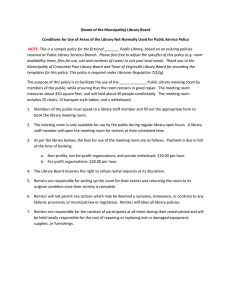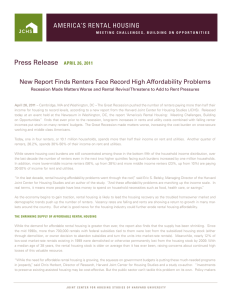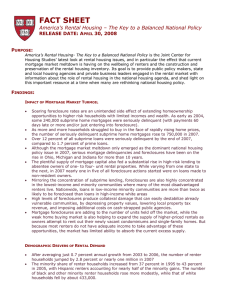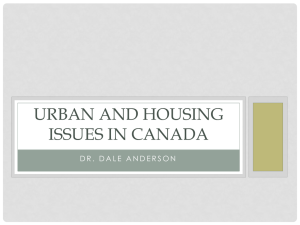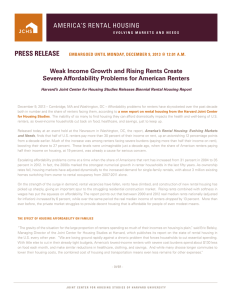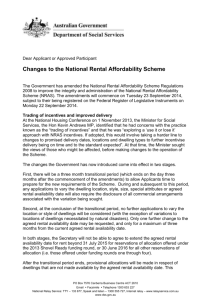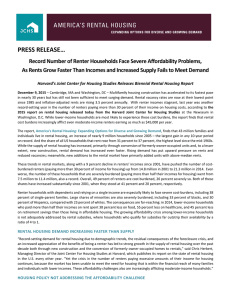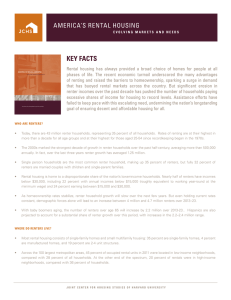Public Policy History and Overview of Affordable Housing
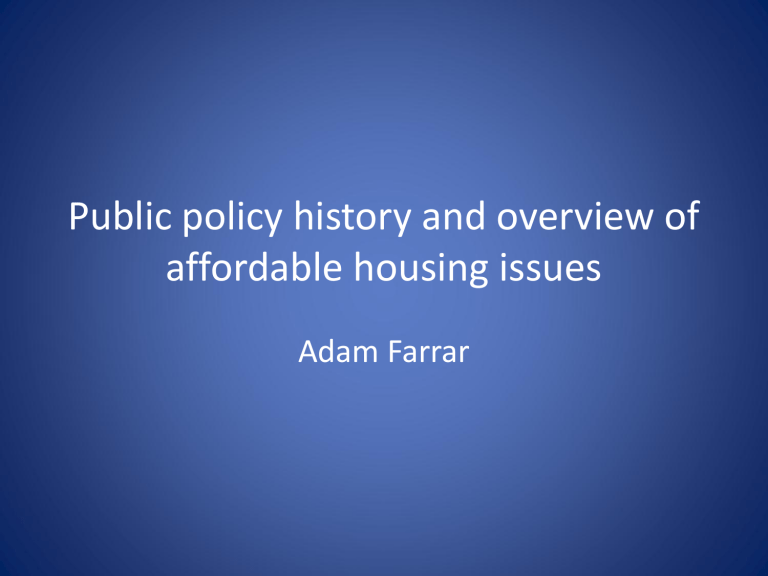
Public policy history and overview of affordable housing issues
Adam Farrar
Housing affordability
• Hard to exaggerate the challenge of rental affordability
• We are seeing a steady decline in home-purchasers with a related growth in renting
• We need over 539,000 more rental homes that are available & affordable to lower income renters (bottom
40%)
• This would take over $150 billion in investment
• A key observation is the linkages in housing effects
The numbers affected
• 60% of lower-income rental households in
Australia were in rental stress in 2009–10
• 224,876 applicants waiting for social housing in 2012
• 105,237 homeless people on census night in
2011
Polarisation
• Unaffordable housing plays a major role in driving locational choices - access to employment, travel costs
• In the 40 localities with the highest number of entry level/low skilled jobs the average rents in all 40 were unaffordable to people on those wages
• On the other side of the coin, this affects the supply of workers in low paid jobs that are significant to local economies – service workers, care workers
Life cycle effects
• Frequent moves in private rental impacts on children’s schooling
• At the other end of the life cycle, the older people in the rental market are at increased risk of poverty – and their numbers are growing
• 30% of long-term renters are aged 45-64
Post-war public policy
• Home ownership has been a plank of our social policy for 60 years
• Implications for national savings, retirement income, tax policy
• The other plank post-war was public housing
• A stepping stone to home ownership for working families & housing (re)construction
New directions
• By the mid 70s groups missing from the public housing target were being ‘discovered’
(Henderson) – singles, disability, older renters, unemployed
• Non-government housing providers began responding – and the refuge movement emerged
• In the 1990s the fragmented funding for
‘community housing’ (LGCHP) was replaced with a larger program to grow a realistic, more flexible, alternative to public housing
The collapse of public housing
• Since the 90s public housing has been in critical decline
• A vicious cycle driven by:
deinstitutionalisation,
under-investment,
a rationed system – ever tighter targeting
internal subsidies through income-related rents led to collapsing revenue
• We now have an unviable system with declining stock
A better social response
• The growth of NFP housing providers
• Aprox 56,000 social housing households - 15% of the social housing system
• A COAG agreement to grow to 35%
• Almost 10,000 new affordable housing dwellings through
NRAS (9,656 delivered by charities at June 2013)
• A rigorous new regulatory environment that stands behind performance and credit worthiness
NFP housing system
• Crucially, this system has taken a different path to public housing – to achieve sustainability and respond to the yawning supply gap:
Mixed income – combining very specific needs and lower income working households
Different rent models – including discount to market
External subsidies – Commonwealth Rent Assistance for social tenants & NRAS for ‘affordable housing’ stock
Debt finance for new construction
Charitable tax benefits and concessions
Policy importance
• Reversal of the affordability trends essential – social, economic and fiscal reasons
• Greatest need for rental housing since the first part of last century – and increasing in the post-peak home owner era
• Current investment settings (CGT exemptions etc) miss low cost end
• Current rental market squeezes out low income renters
• Scale of the investment/ supply needs far too big for direct government investment alone
• Essential not to replicate the unviable public housing model
Some lessons
• The response to the housing crisis for very low income households cannot be quarantined from other lowerincome households
• The policy goal must include the creation of a part of the market that does not yet operate at scale – NFP housing
• Rental housing is a marginal business – it can only work for the lower end of the market by marshalling all efficiencies.
Charitable benefits are crucial
• Housing management and development is a long term business, and requires strong balance sheets – without undercutting its charitable character
